Agriculture is a pillar of the East African economy, employing up to 80% of the population and accounting for 25% of GDP. Expansion of the sector has the potential to significantly improve livelihoods and bring widespread prosperity to the people of the region.
East African Community (EAC) member states Burundi, Kenya, the Democratic Republic of the Congo, Rwanda, South Sudan, Tanzania, and Uganda are pursuing regional agricultural goals outlined in EAC policies that seek to:
- Preserve and boost agricultural productivity
- Remove trade barriers to improve intra-regional trade
- Increase resilience to climate change
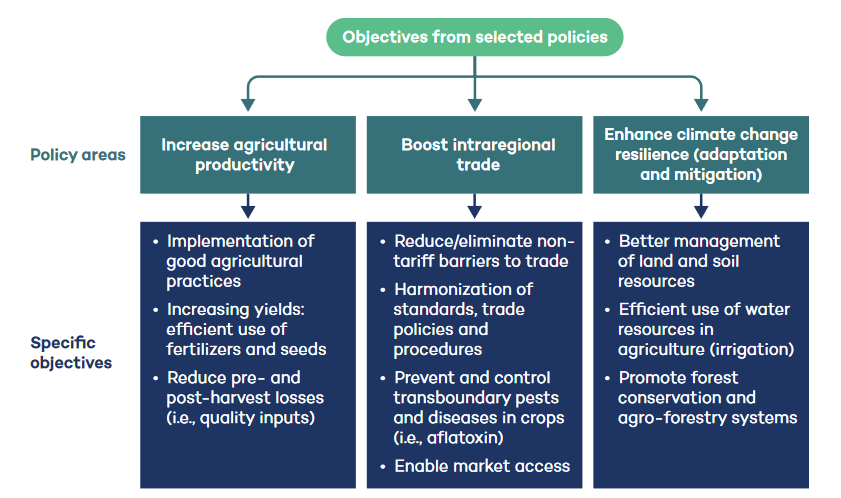
What does it take to transform East Africa through Agriculture?
A Role for Voluntary Sustainability Standards( VSSs)
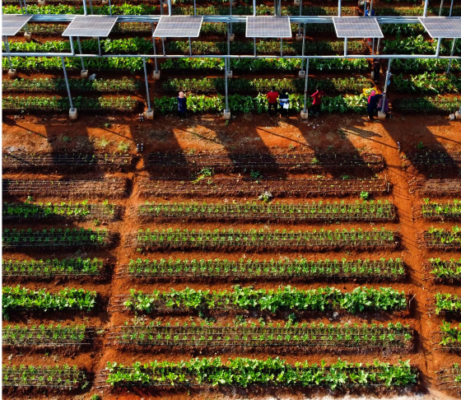
Voluntary Sustainability Standards (VSSs) have grown in popularity as a means of ensuring that agricultural production and trade are beneficial to economies, societies, and the environment.
Voluntary Sustainability Standards (VSSs) in East Africa, the first regional report from IISD’s State of Sustainability Initiatives,(The report was written before the Democratic Republic of the Congo became the East African Community’s seventh Partner State on March 29, 2022) demonstrates how adopting standards to produce staple crops like beans, maize, rice, and wheat can help achieve these regional policy objectives while protecting vital ecosystems, managing scarce resources efficiently, and supporting workers’ livelihoods and rights.
There is a significant opportunity to use VSSs to increase the production and trade of staple crops in East Africa in a sustainable manner. Smallholder farmers, in particular, stand to benefit from this expansion because they make up a large portion of the supplier base and rely on staple crops for livelihood and personal consumption. At the same time, such growth will reduce the region’s reliance on imports.
According to this study, sustainability standards can:
- Incentivize climate-resilient practices such as improving soil quality, conserving water, incorporating agroforestry, and facilitating ecosystem restoration.
- Aid in increasing crop productivity among staple crop producers, for example, by improving crop handling and storage practices so farmers can deal with mold contamination that threatens crops, as well as by facilitating access to high-quality inputs and related training.
- Encourage intraregional trade by encouraging producers to comply with relevant laws and regulations, as well as by encouraging alignment between other standards and best practices, such as their criteria for pest management, disease outbreaks, and targeted chemical use.
As a result, the report includes recommendations for VSS bodies, the EAC, and its Partner States to encourage the use of standards in order to achieve sustainable agricultural growth that is in harmony with nature and communities.
East African producers, businesses, industry organizations, and commodity round table members can use VSSs as a framework to implement sustainable production and sourcing policies and gain market recognition.
Agriculture Offers Major Opportunities for East Africa—But Challenges Persist
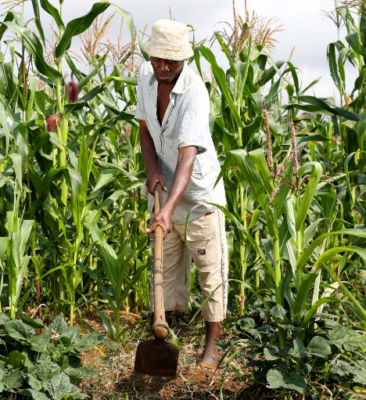
Regional integration is vital for development because it has the potential to boost regional competitiveness and interconnection. Integration can also help to diversify economies away from reliance on the export of a few primary cash commodities, provide food and climate security, create jobs for an increasing number of young people, and alleviate poverty by delivering shared prosperity.
Regional integration is a priority for the EAC and will boost the agricultural sector by increasing intra-regional and international trade. The East Africa Community is an example of a successful developing-country regional economic integration process in agreement content and implementation. There is a desire to investigate the possibility of leveraging VSSs to address challenges and achieve regional priorities.
Over the last decade, the East African region’s economic performance has been generally strong. East Africa is the only region in Africa that has avoided an economic recession in 2020, owing primarily to strong agricultural performance, sustained infrastructure spending, and increased economic integration. According to the African Development Bank’s latest economic outlook report for the region, East Africa’s economic growth continues to be bullish despite covid-19 pandemic.
East Africa’s growth is driven by industry and services, but it’s still supported by increased agricultural production and sustained infrastructure investment. Agriculture is a primary driver of growth and is vital to the region’s economy. Agriculture accounts for approximately 25% of regional GDP and provides a significant source of income for about 80% of the rural population.
The agricultural sector is also a significant source of foreign exchange earnings, accounting for more than half of the total raw materials used in the manufacturing industry. Despite this growth and the region’s positive economic forecast, the region faces severe structural impediments that undermine long-term development prospects, particularly in the rural sector, as measured by national income per capita, human assets (i.e., education), and economic vulnerability criteria (United Nations, 2018).
The benefits of the EAC’s strong growth have been uneven, and the region still has a high incidence of poverty, inequality, and unemployment, particularly among agricultural producers and workers. East Africa’s agriculture faces three major challenges:
- Maintaining and improving agricultural productivity
- Increasing intraregional trade
- Building resilience to climate change
Improving Agricultural Productivity among East Africa Communities
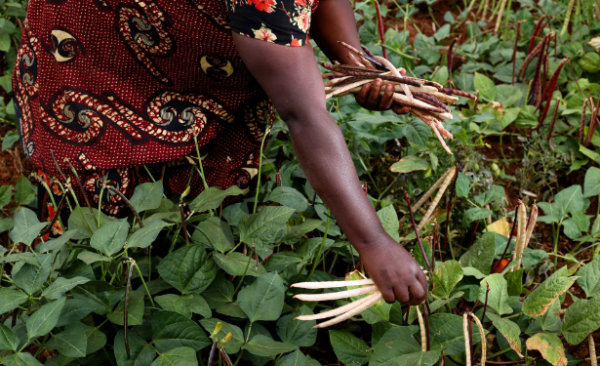
In the EAC countries, the low agricultural productivity of staple crops remains a challenge. Crop yields can be extremely variable due to the combination of erratic climate conditions and a high reliance on rain-fed agriculture. Low productivity is caused lack of inputs, specifically agrochemicals, seeds (particularly high-yielding and climate-friendly varieties), farm implements and equipment, and fertilizer.
Despite some progress in recent decades, agricultural yields have not increased sufficiently to meet the rapidly increasing demand for basic food commodities, resulting in food shortages and increased imports from Asia and South America (The region relies on significant imports of food staples such as maize and wheat as well as vegetable oil).
Food security is a major issue in the region as a result of climate change. According to World Vision East Africa’s Food Security and Nutrition Working Group special report of 10 February 2022, an estimated 5.5 million children in Ethiopia, Kenya, and Somalia are acutely malnourished, including more than 1.6 million who are extremely acutely malnourished.
Agricultural workers and producers are particularly vulnerable to food insecurity because the majority of the poor and food-insecure population lives in rural areas and relies on agriculture for a living.
Pests and diseases in agriculture reduce the productivity and availability of key staple and commercial crops, on which many people rely directly or indirectly for food, employment, and income.
The EAC Secretariat has been working hard to mobilize its Partner States in order to ensure a coordinated response to these transboundary threats. Access to safe and effective pesticides is a critical component of the response strategy. Harmonizing EAC pesticide management practices is a continuing priority.
Minimizing Over-Reliance on Global International Partner States – Boosting Intra- Regional Trade
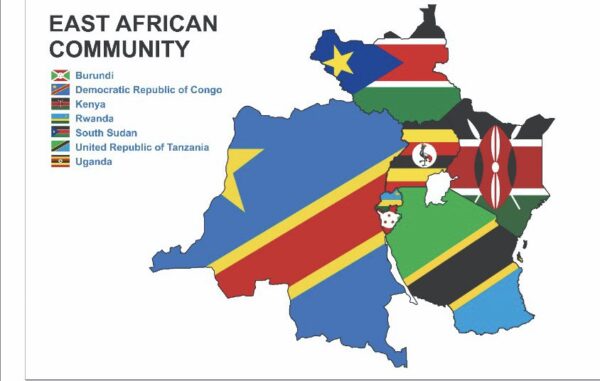
A practical solution to reducing reliance on global international partner countries is to increase East African regional trade, which has the potential to pave the way to food security. East African communities have enough fertile lands and food to ensure that their citizens do not go hungry; the challenge is determining how to ensure that trade contributes significantly to food security.
To ensure food availability and reduce price volatility, agricultural markets must be linked, producer incentives in surplus zones maintained, and cross-border trade increased. East African countries have welcomed the opportunity to strengthen intra-regional trade and implement firm measures to ensure the seamless exchange of goods and services, as well as food sufficiency.
One of the major constraints to economic development in the EAC is the Partner States’ reliance on a few primary agricultural commodity export markets, particularly cash crops such as coffee, tea, cotton, tobacco, and horticultural products, for which markets are highly concentrated, volatile, and sensitive to price fluctuations.
This concentration in sectors with limited potential for productivity growth has resulted in a lack of diversity, increasing vulnerability to adverse external shocks and affecting export earnings and macroeconomic stability.
Dependency on the international Partner States and lack of crop diversification exposes the region to several challenges:
- Instability in export earnings
- Low farm-gate prices (which limit the access to quality agricultural inputs for farmers; constraints to farm productivity)
- Poor access to national, regional, and global markets due to the lack of conditions to compete with more mature and organized structures.
- Lack of diversification also increases the region’s food and nutrition insecurity vulnerability.
Building Resilience to Climate change and East African agriculture
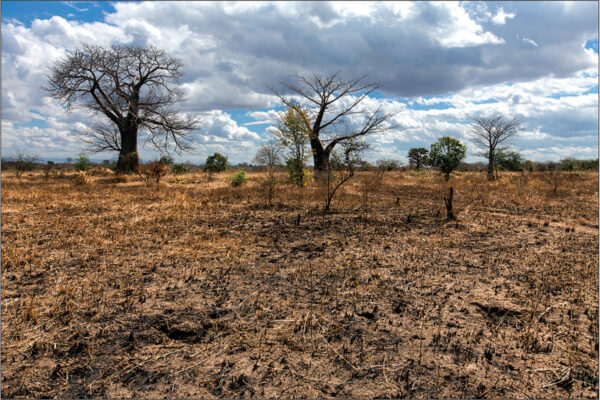
Climate change is a major issue affecting agricultural productivity and livelihoods in East Africa. The region is expected to continue warming faster than the global average, with longer dry spells and shorter wet spells. Droughts are expected to worsen as evaporation increases, and the agricultural sector, which is mainly small-scale and rain-fed, is especially vulnerable to drier conditions.
The region experienced one of the driest seasons in decades in 2019, with the rain deficit severely affecting seed germination and overall growing conditions, resulting in significant crop and livestock losses and temporary displacement. It also decreased agricultural productivity, worsening the situation for rural and, in particular, low-income households.
Climate policies in the EAC address several critical issues in agriculture. However, farmer adoption of these policies remains low due to a lack of investment at the farm and national levels, knowledge and capacity gaps on sustainable and climate-resilient agricultural practices, and poor coordination among industry players.
According to the FAO, sustainable agricultural practices, as opposed to conventional ones, are not adequately incorporated into national agricultural extension training and manuals and the region’s overall agricultural extension system.
